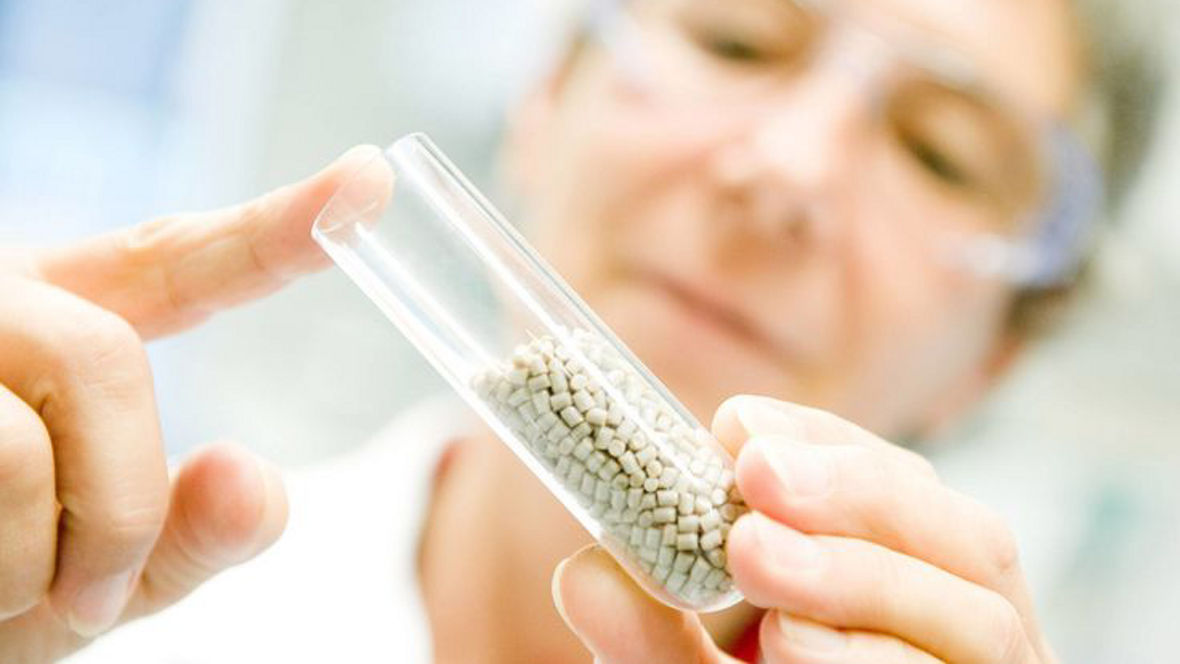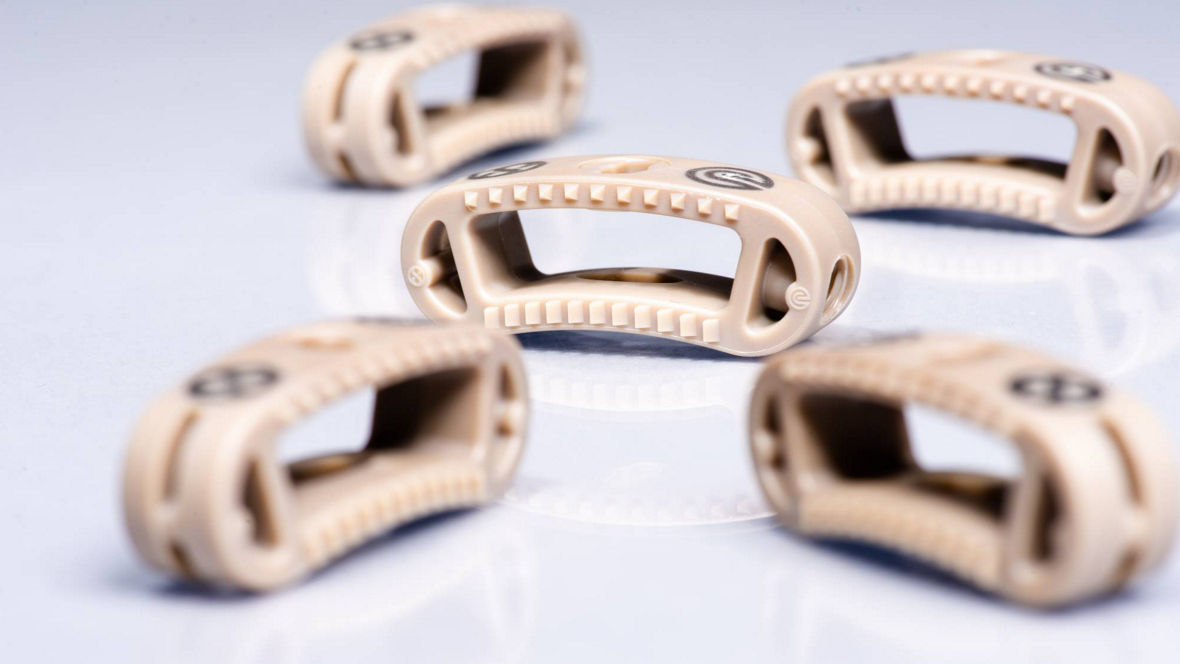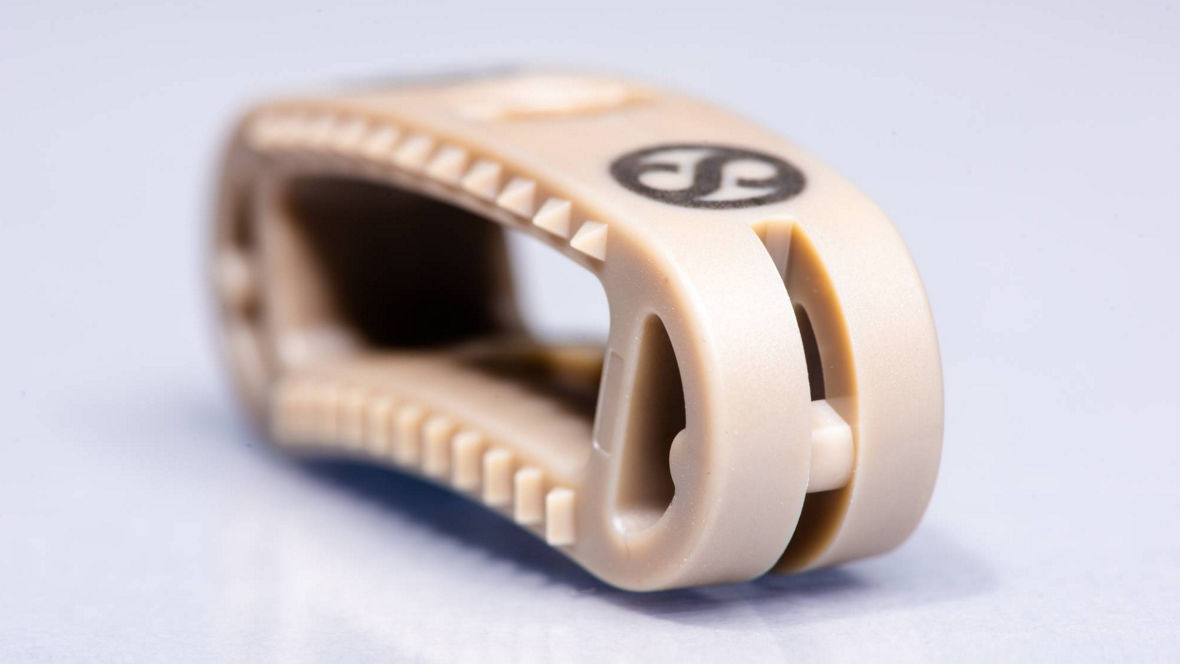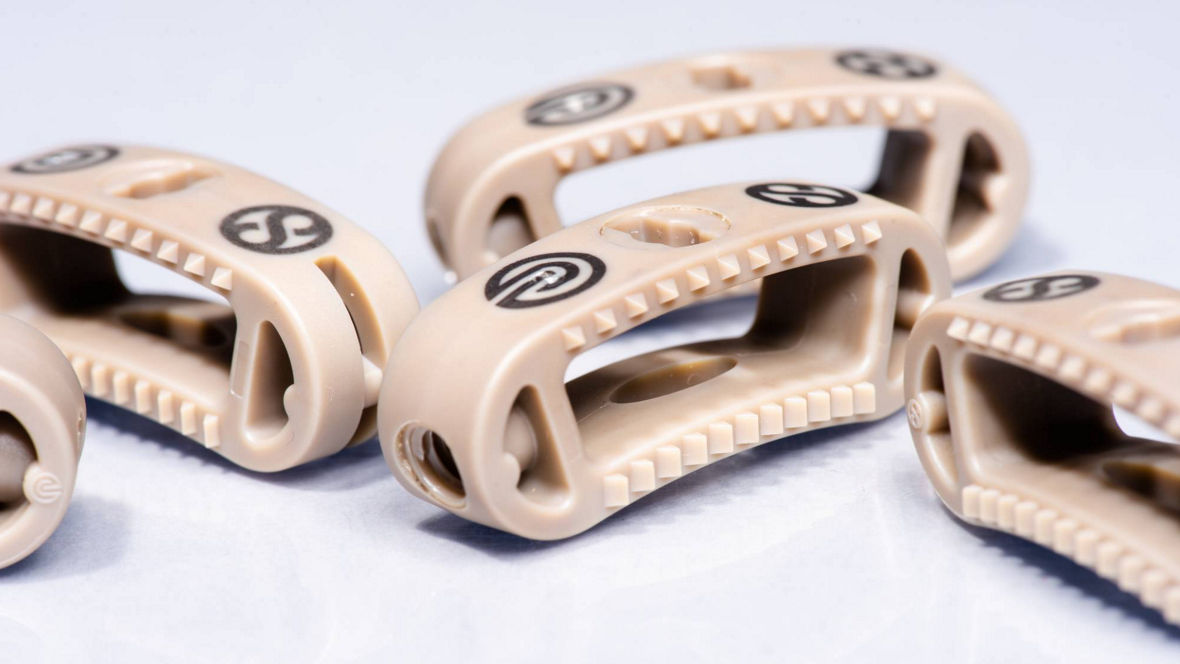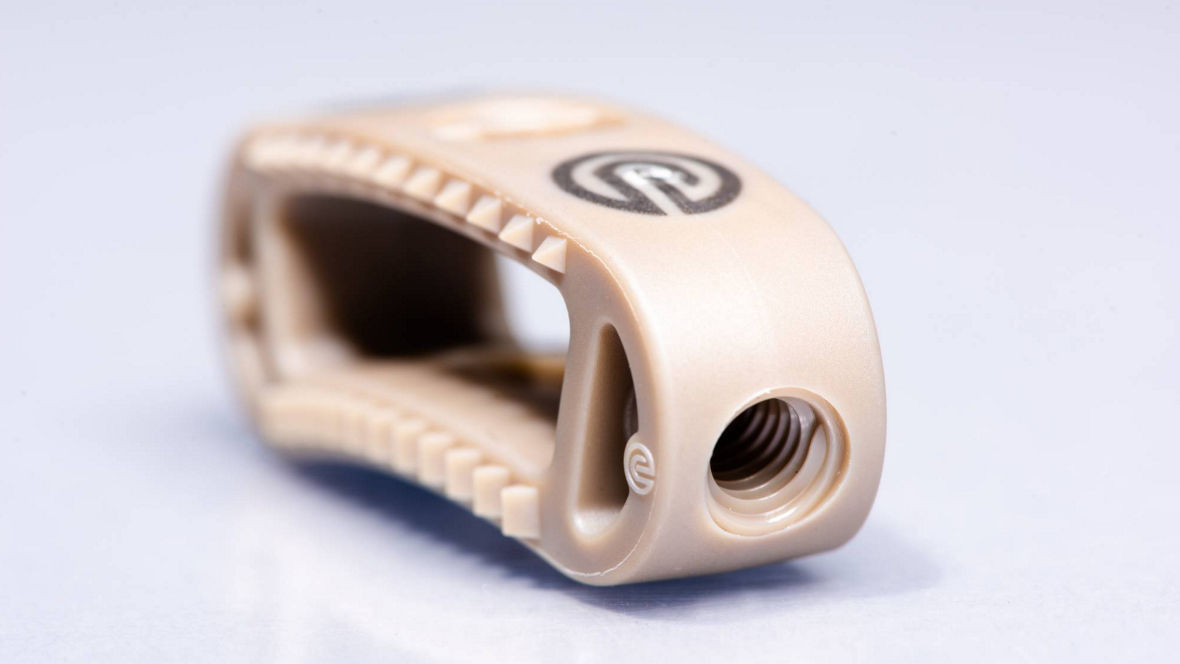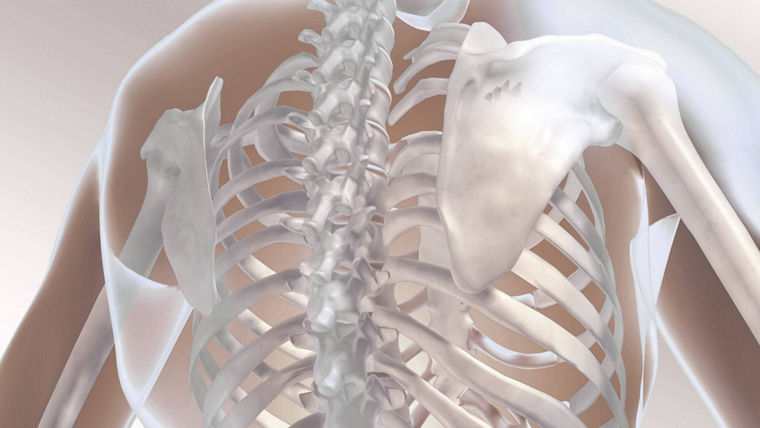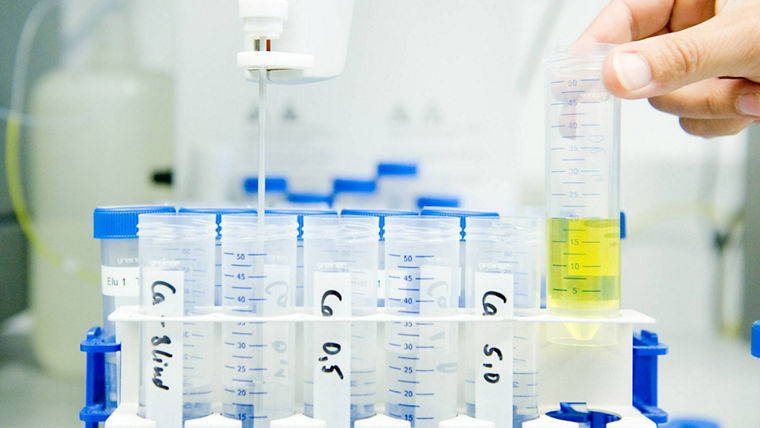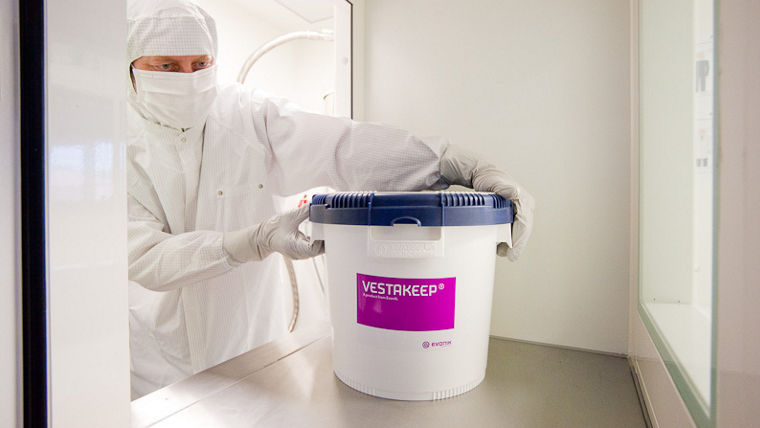We boost the next generation of PEEK introducing our new VESTAKEEP® Fusion product line - for accelerated bone healing of your metal-free implants
Functional Additive - Biphasic Calcium Phosphate
The experts from Evonik have succeeded in giving PEEK osteoconductive properties with the help of an additive, i.e., modifying the compound so that bone cells adhere to the implant. The functional specialty additive is biphasic calcium phosphate (BCP). Calcium phosphates are a natural component of bone. If osteoblasts find body-like substances at the implant, they can dock there more easily. This positively influences osteointegration, the interfacial fusion between bone and implant.
The development team at Evonik explored more than 50 different formulations to match the morphology and size of the particles to achieve optimal mechanical properties so that the functional additives are available on the surface of the injection molded part.
- Enhanced cell attachment and cell proliferation (>30%).
- Same excellent biocompatibility as all VESTAKEEP i-Grades.
- Natural image contrast in x-ray.
- Histology shows dense network of bone growth at implant interface.
- Bone histomorphometry shows ~2-fold enhanced bone apposition.
- Pull-out tests show >2-fold increased implant fixation.
- E-modulus similar to cortical bone.
- High ductility and impact strength.
- Versatile processing options with bioactive components presented on the surface including injection molding or 3D-printing.
Calcium phosphates composition and other additives can be designed according to customer need.
Enhanced cell attachment and proliferation (>30%)

VESTAKEEP® iC4800 is the first PEEK compound from Evonik wich, facilitates the formation of new bone substance. This has been confirmed by common test methods. In vitro studies document over 30 percent increased cell attachment and cell proliferation. In preclinical tests, histological examination reveals a dense network of newly formed osteoblasts at the bone-implant interface. Bone histomorphometry shows an approximately twofold increase in bone apposition. And pull-out tests demonstrate a more than twofold increase in implant fixation.
Like all other high-performance polymers based on PEEK for medical technology, VESTAKEEP® Fusion does not form any disturbing artifacts in imaging procedures such as X-ray or MRI - an advantage over implants made of metals. Similarly, for progress monitoring, it is necessary for the implant to be clearly visible on X-ray images. The BCP additive creates a natural shadow that allows the practitioners to accurately locate the implant and observe the fusion process.
Cage prototype demonstrates the design diversity
The ability to process VESTAKEEP® Fusion by injection molding expands the range of applications for osteoconductive implants, particularly in spinal surgery. Until now, spinal implants made of PEEK have mainly been milled. There are a variety of designs and sizes on the market, often produced in small quantities. And this is precisely where there is great potential for injection molding osteoconductive PEEK implants with VESTAKEEP® Fusion: different modules can be produced with one basic mold.
Samaplast manufactures VESTAKEEP® Fusion on injection molding machines in the clean room and found that it was very easy to process.
The original geometry is available. Samaplast can build the mold for injection molding within ten to twelve days. Customers only have to supply with the design, then they get the sterile-packaged implant within four weeks. This results in several advantages for medical device suppliers: They receive an original component that has passed a strict quality management system very quickly from a single source. Unlike implants, which consist of components from several manufacturers, the supply chain here remains short and manageable. Samaplast also offers OEMs design support if required.
Proven functionality in injection molding
Under the scanning electron microscope, it can be clearly seen that there is no film formation on the surface during injection molding of VESTAKEEP® Fusion. In addition, images of a VESTAKEEP® iC4800 injection-molded screw show a comparable distribution density of calcium phosphate particles inside the screw and on its surface. This is also confirmed by energy dispersive X-ray spectroscopy (EDX analysis).
The comparison of milled and tip-cast components made of VESTAKEEP® Fusion shows no statistically significant deviations in cell proliferation and adhesion of osteoblasts.

Under the scanning electron microscope, it can be clearly seen that there is no film formation on the surface during injection molding of VESTAKEEP® Fusion. In addition, images of a VESTAKEEP® iC4800 injection-molded screw show a comparable distribution density of calcium phosphate particles inside the screw and on its surface. This is also confirmed by energy dispersive X-ray spectroscopy (EDX analysis).
The comparison of milled and tip-cast components made of VESTAKEEP® Fusion shows no statistically significant deviations in cell proliferation and adhesion of osteoblasts.
ANY QUESTIONS LEFT? JUST CONTACT US.
"Our global team of experts is ready to support you with all questions around VESTAKEEP® PEEK and its applications. Contact us to profit from more than 30 years of application know-how in the field of medical devices and find your individual solution!"
Dr. Philip Engel
Head of Segment Medical Systems Europe

